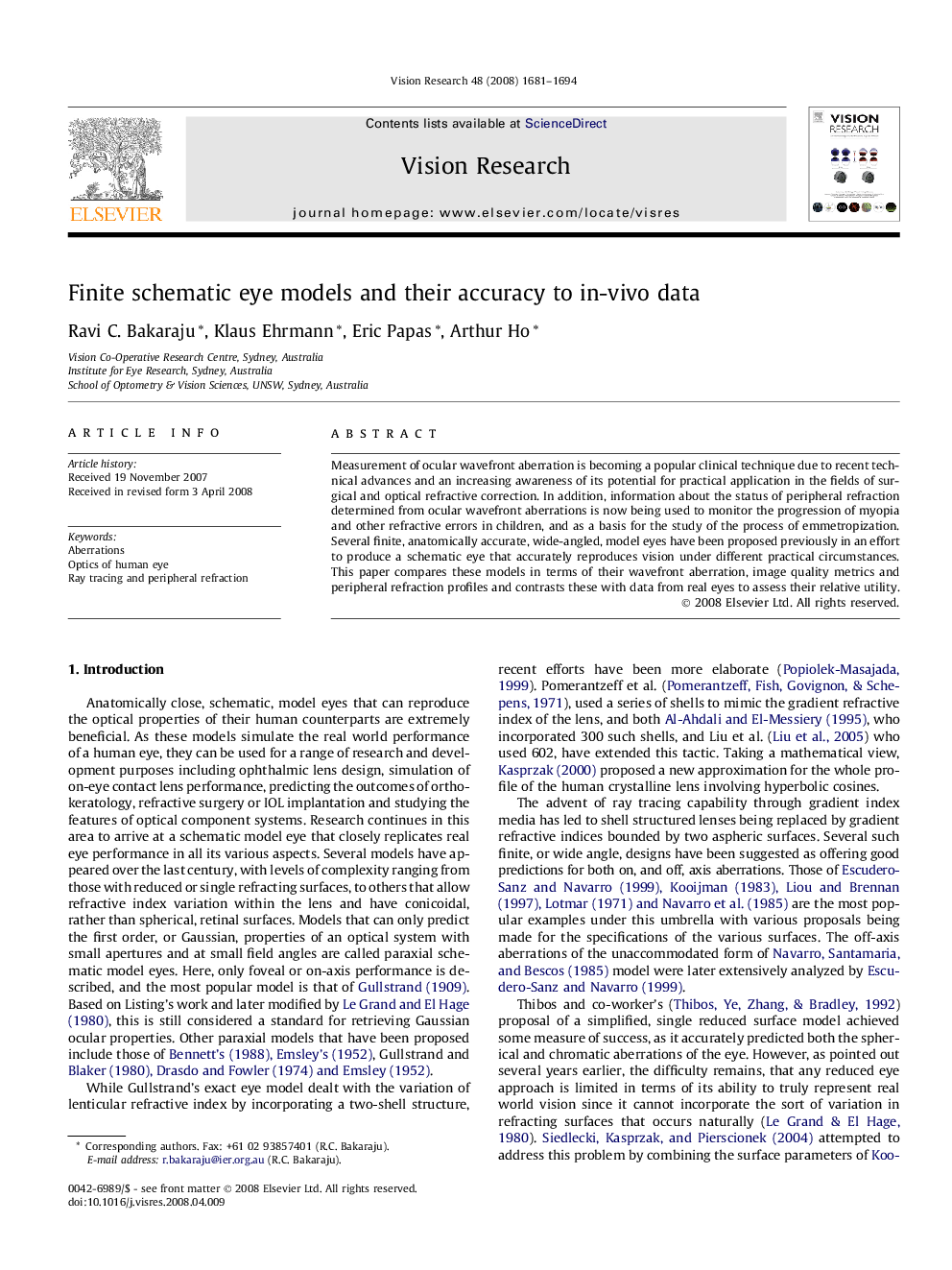| Article ID | Journal | Published Year | Pages | File Type |
|---|---|---|---|---|
| 4035007 | Vision Research | 2008 | 14 Pages |
Measurement of ocular wavefront aberration is becoming a popular clinical technique due to recent technical advances and an increasing awareness of its potential for practical application in the fields of surgical and optical refractive correction. In addition, information about the status of peripheral refraction determined from ocular wavefront aberrations is now being used to monitor the progression of myopia and other refractive errors in children, and as a basis for the study of the process of emmetropization. Several finite, anatomically accurate, wide-angled, model eyes have been proposed previously in an effort to produce a schematic eye that accurately reproduces vision under different practical circumstances. This paper compares these models in terms of their wavefront aberration, image quality metrics and peripheral refraction profiles and contrasts these with data from real eyes to assess their relative utility.
